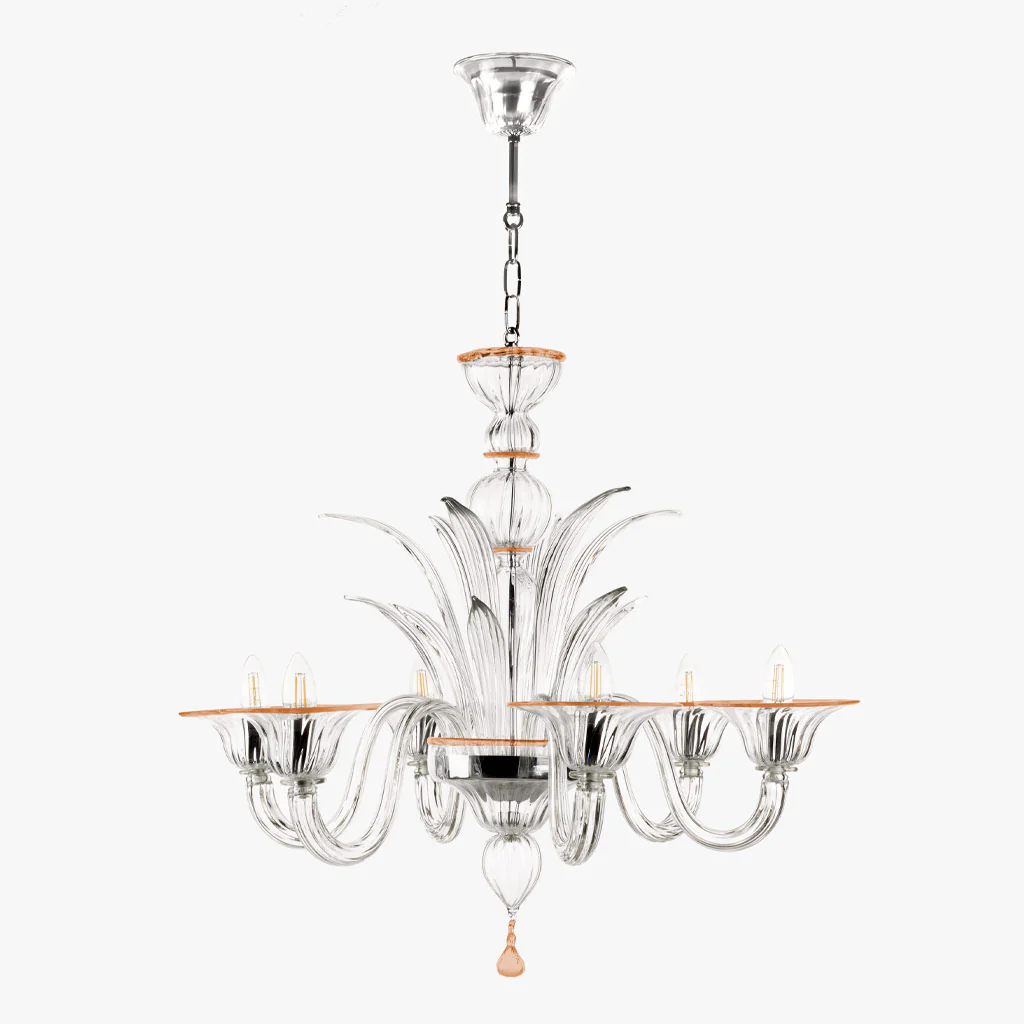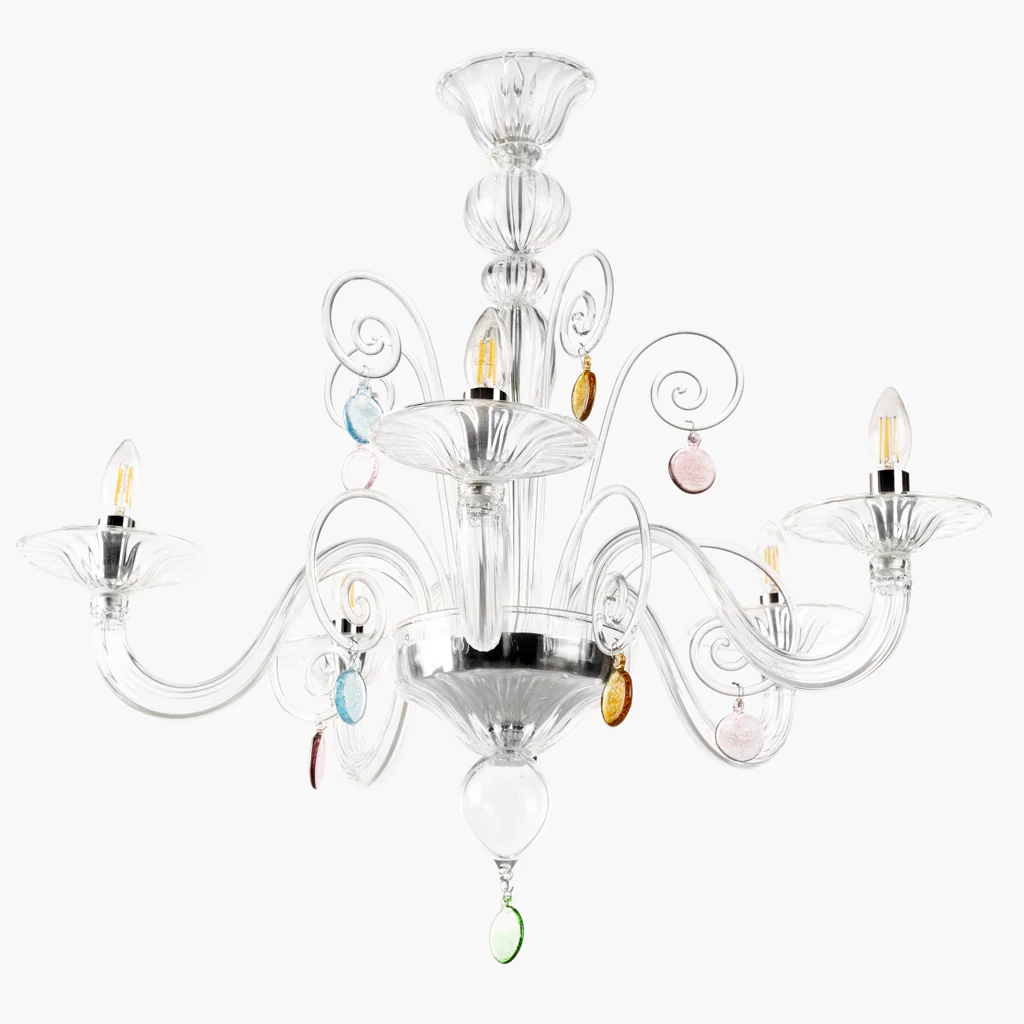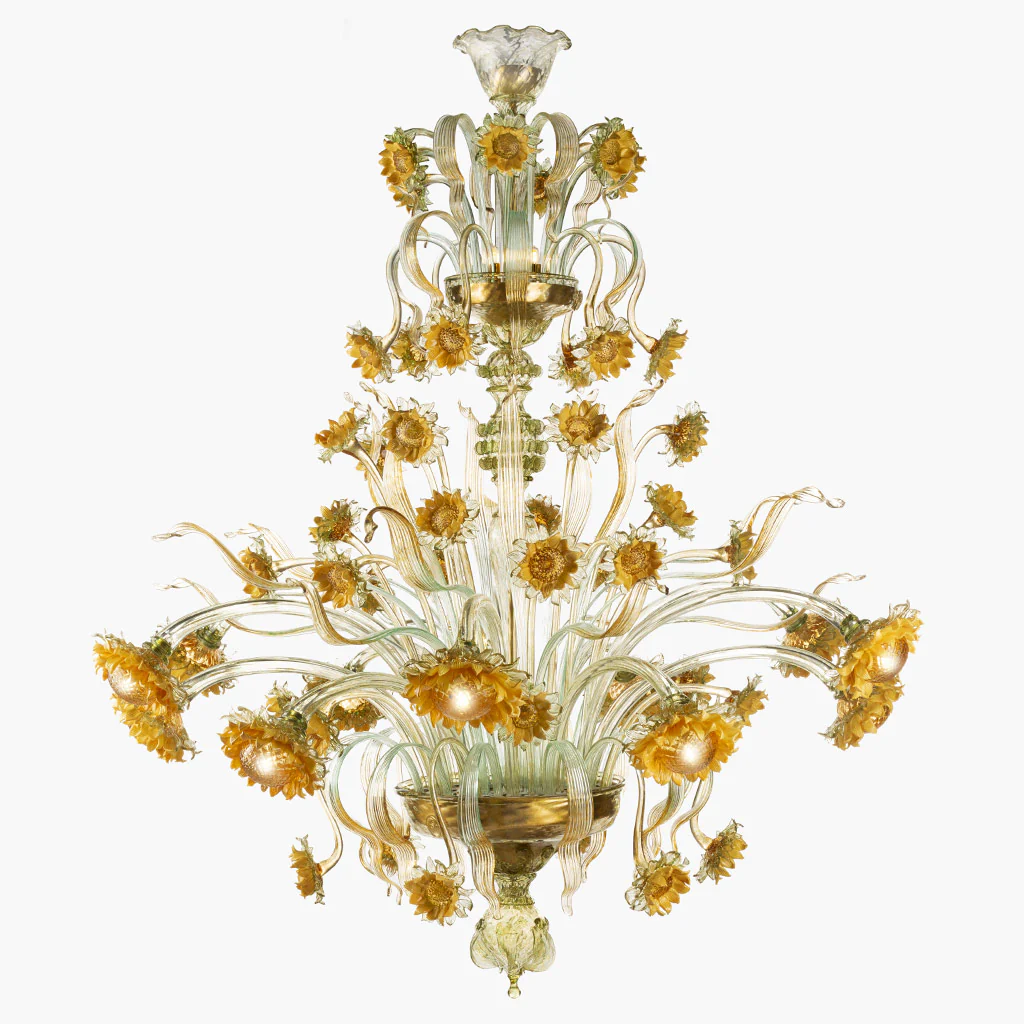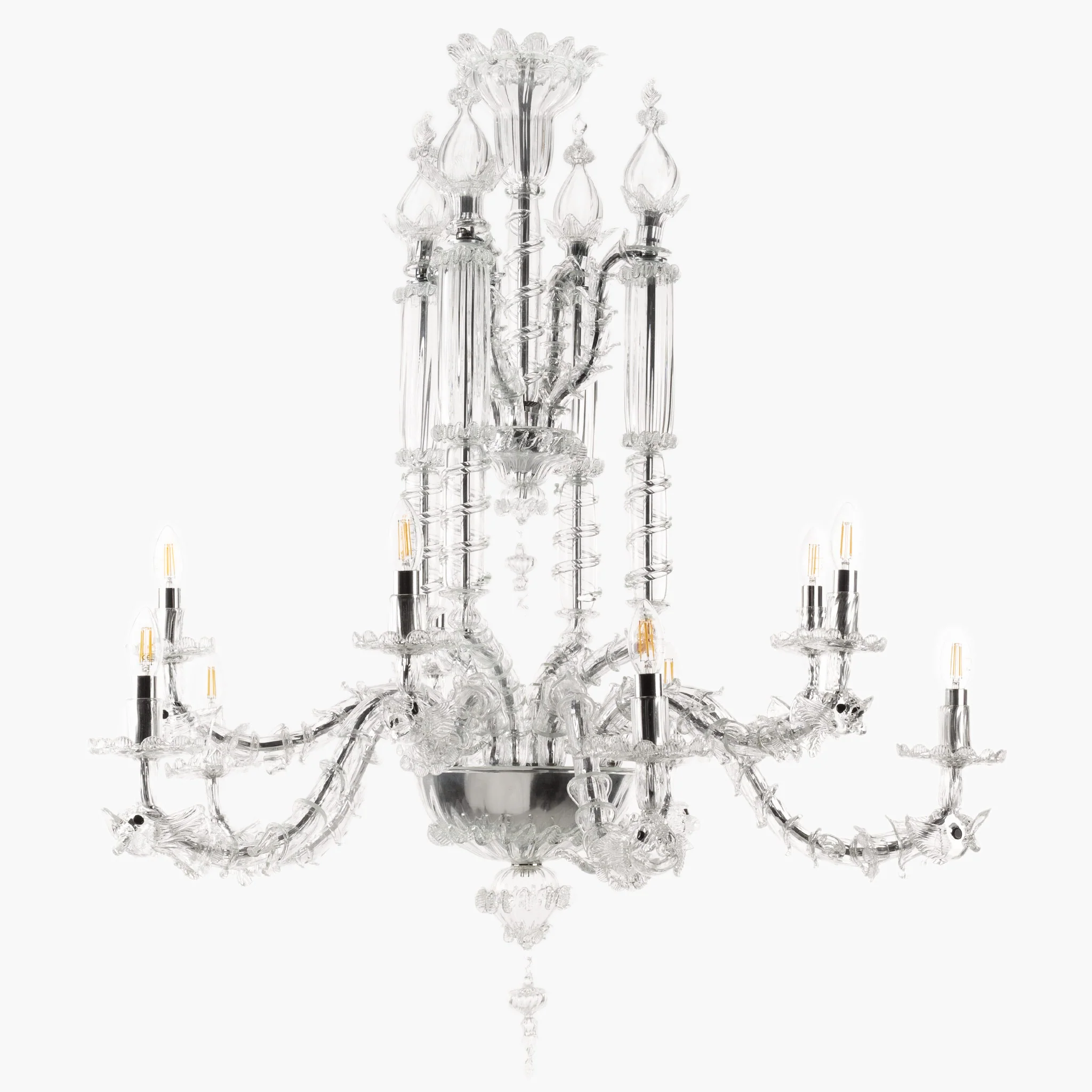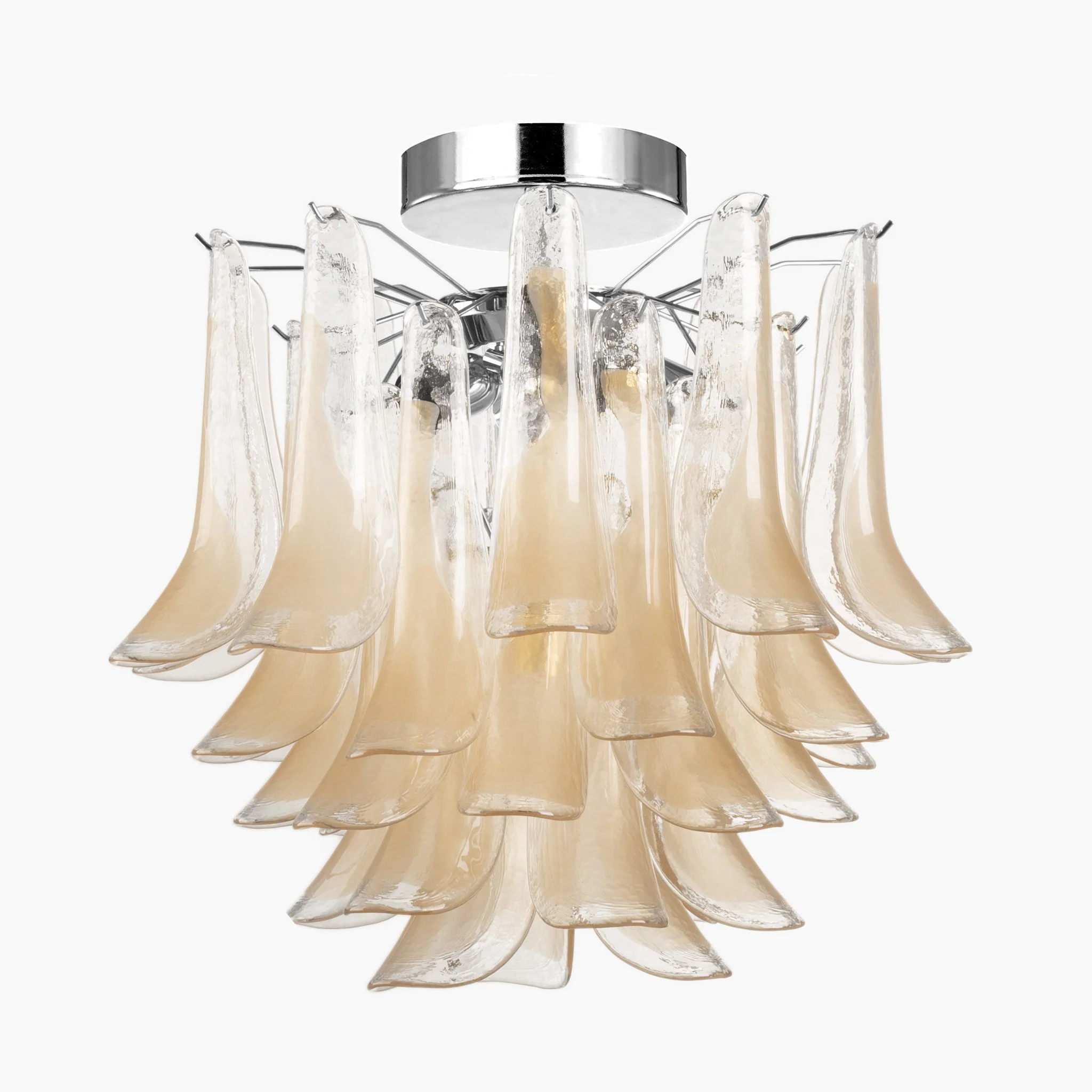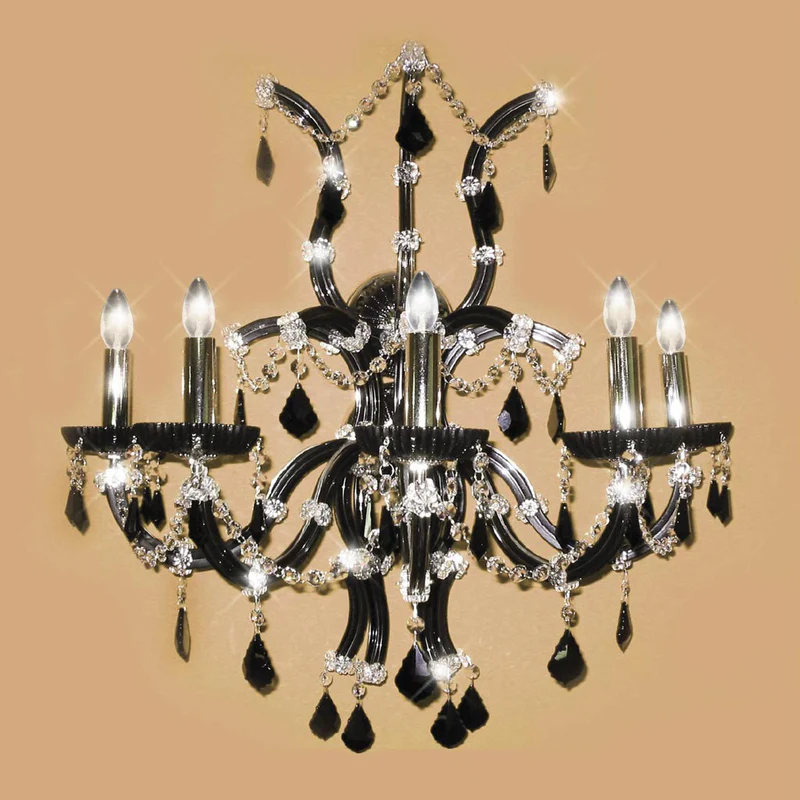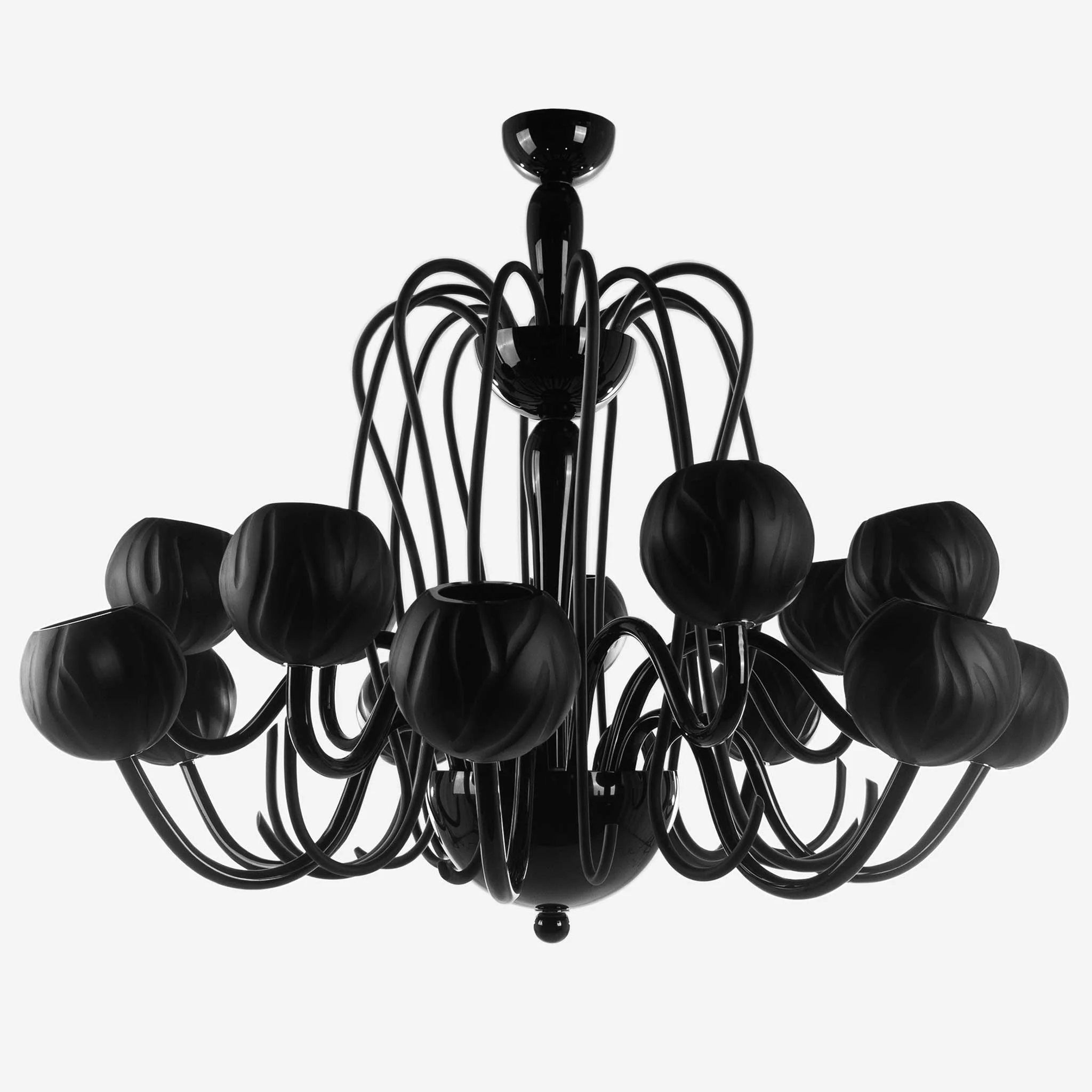What are the most characteristic colors of Murano glass

The colors of Murano glass
In today’s article, we will delve into the most distinctive colors of Murano glass, explaining their composition and the various types of glass.
Since its inception, Murano glass has drawn inspiration from natural stones, adopting their names to describe its hues.
It’s not just red, but ruby; not merely brown, but golden amber; not just any green, but a deep emerald.
The composition of colors
As previously mentioned, Murano glass colors are created by adding metal oxides to the glass mixture, which work their magic during the melting process.
Here are the key oxides:
Cupric copper. It gives the glass a delicate aquamarine green tone.
Cuprous copper. It infuses the glass with a rich, vibrant red.
Cobalt. It creates a deep, regal blue.
Iron and chromium. Together, they produce an unrivaled emerald green.
Manganese dioxide. Different ranges from lilac to black, with the enchanting "amethyst"—a purple so dark it nearly appears black.
Iron. It lends the glass warm brown shades.
Antimony. It illuminates the glass with a sunny yellow.
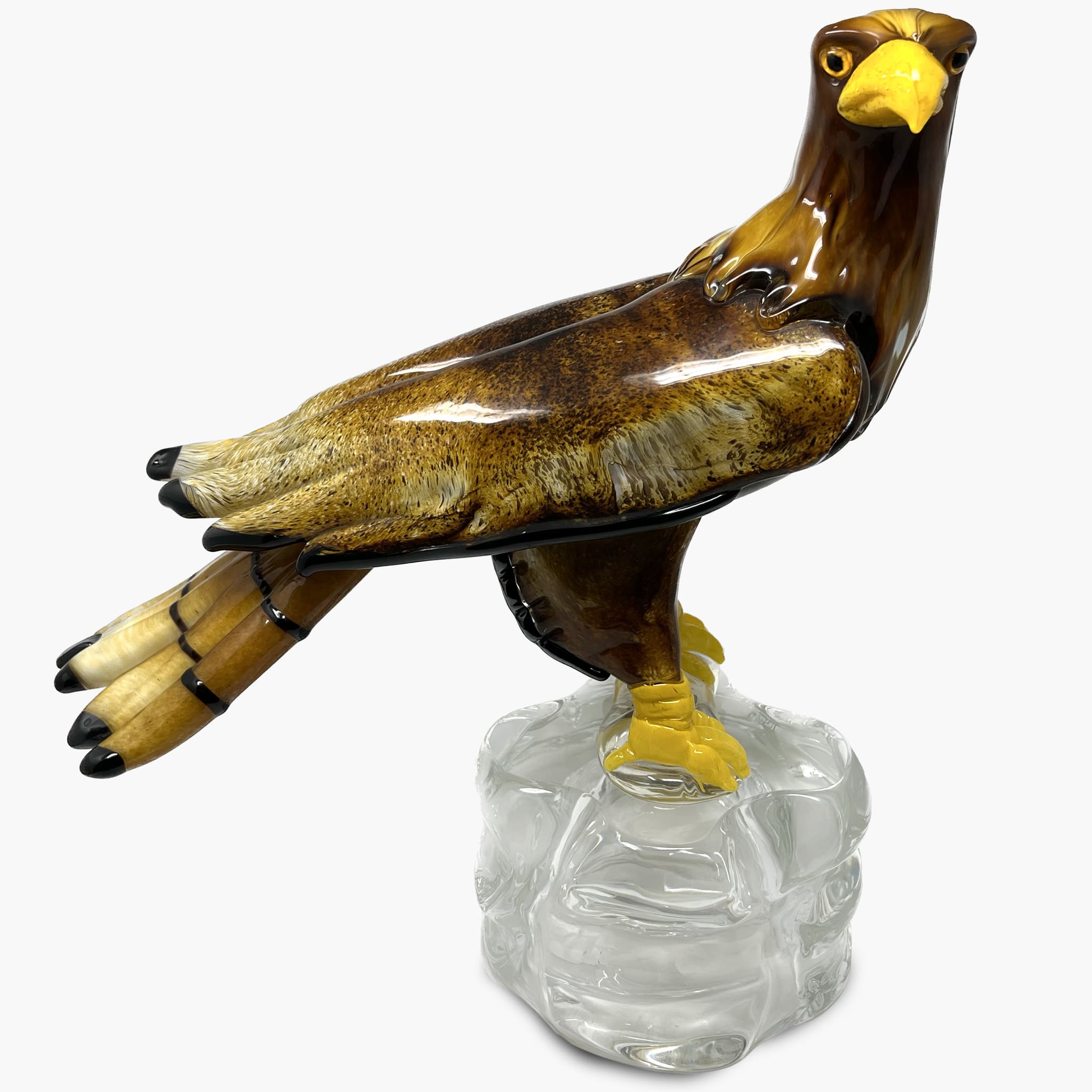
Yellow, orange and red
These colors are particularly challenging to achieve because their pigmentation comes from microscopic particles that tend to separate from the molten glass during cooling, remaining dispersed within.
Ruby glass
Among the most sought-after and expensive colors, ruby glass requires the addition of 24-karat pure gold to the glass mixture. The gold is fused with acid and then blended into the composition.
Opaque glass
Opaque colored glass is made using the same technique as transparent glass, with a base of white opal glass.
The deep knowledge of pigments and the skilled craftsmanship of Murano's glass masters result in a constantly evolving palette of colors, where each shade tells a story and evokes a unique emotion.
Types of Murano glass and their history
It’s essential to distinguish between the different types of Murano glass.
Cristallo
Clear as crystal water, crystalline glass is made by purifying raw materials through a process of repeated melting, immersion in water, and remelting. This method was invented by Angelo Barovier in the 15th century.
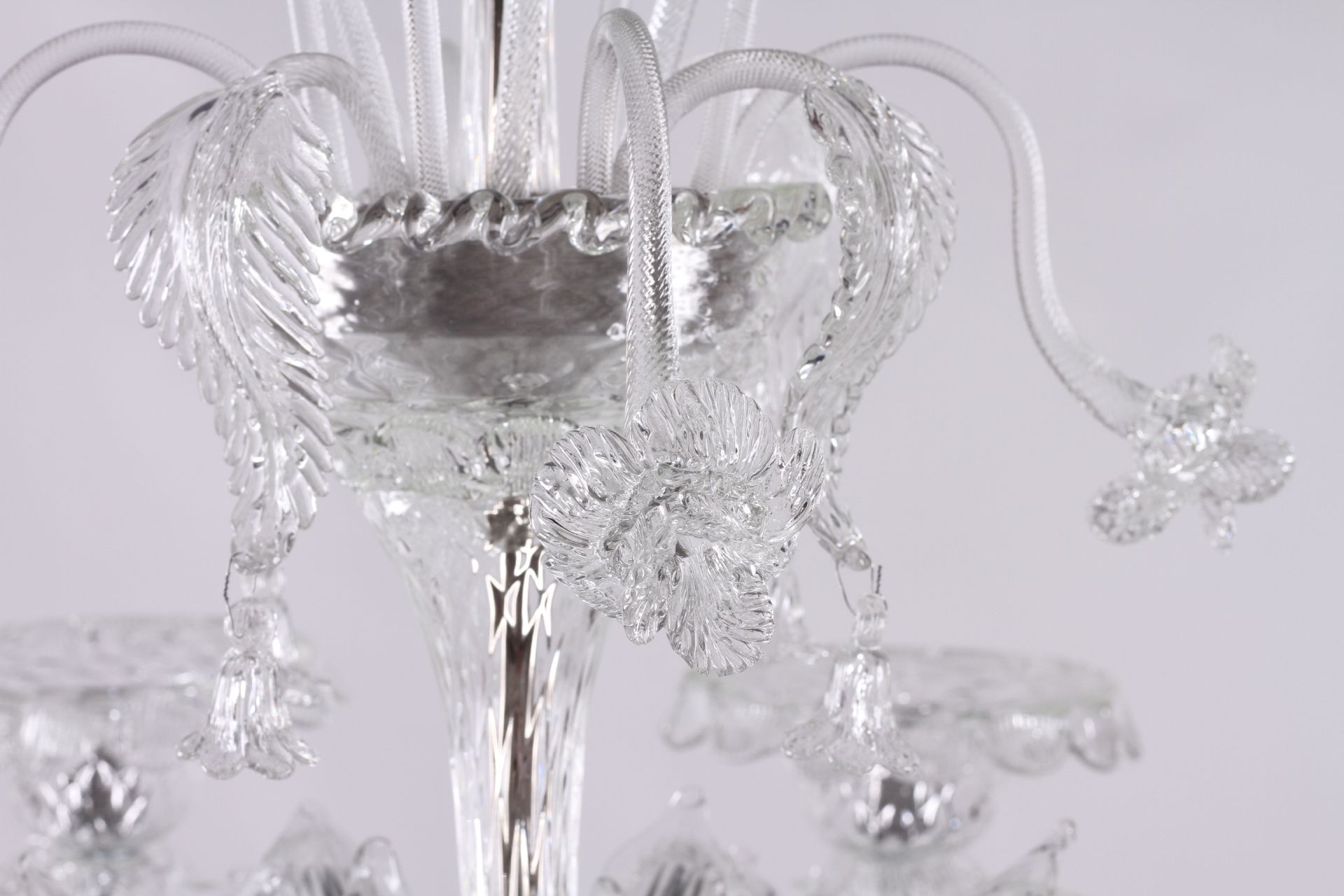
Avventurina
A dark red or brown glass flecked with shimmering stars, avventurina captures the eye with its sparkle. The effect is created by molten copper solidifying within the glass mixture. This technique dates back to the 17th century.
Pulegoso
With a rough surface, trapped bubbles, and a rustic charm, pulegoso glass is made by adding sodium bicarbonate or oil to the molten glass, which releases carbon dioxide. It was invented by Napoleone Martinuzzi in the early 20th century.
Calcedonio
A play of colors reminiscent of semiprecious stones, calcedonio glass is made by fusing metals of different colors. This technique originated in the 16th century and was rediscovered in the 19th century after being forgotten for a long time.
Girasole
An opalescent effect that changes color depending on the light, girasole glass is achieved by adding lead arsenate crystals to the glass. This technique dates back to the 16th century.
Lattimo
Opaque white like Chinese porcelain, lattimo glass owes its charm to the addition of fluoride salts. Over time, it has also been used in enamel decorations on gold and silver.
Filigrana
Intricately woven lattimo threads create elegant designs—this is filigree glass, one of the most characteristic Murano glassmaking techniques. Its variations include retortoli with twisted filaments, reticello with diamond patterns and air bubbles, and fili with parallel or spiral threads. This art form dates back to the 16th century.
Ghiaccio
A crackled effect resembling ice, created by plunging hot glass into cold water and reheating it multiple times. This technique emerged in the 19th century and is especially popular for making lamps.
Gold or Silver Leaf
Thin sheets of precious metal trapped between two layers of transparent glass create the gold or silver leaf glass technique. The blowing process results in a luminous, fragmented effect across the surface.
Sommerso
Layers of color that overlap without blending, creating the illusion of depth—this is sommerso glass. This technique was invented by Antonio Da Ross in the 1930s and allows the creation of objects with vibrant color stratifications.
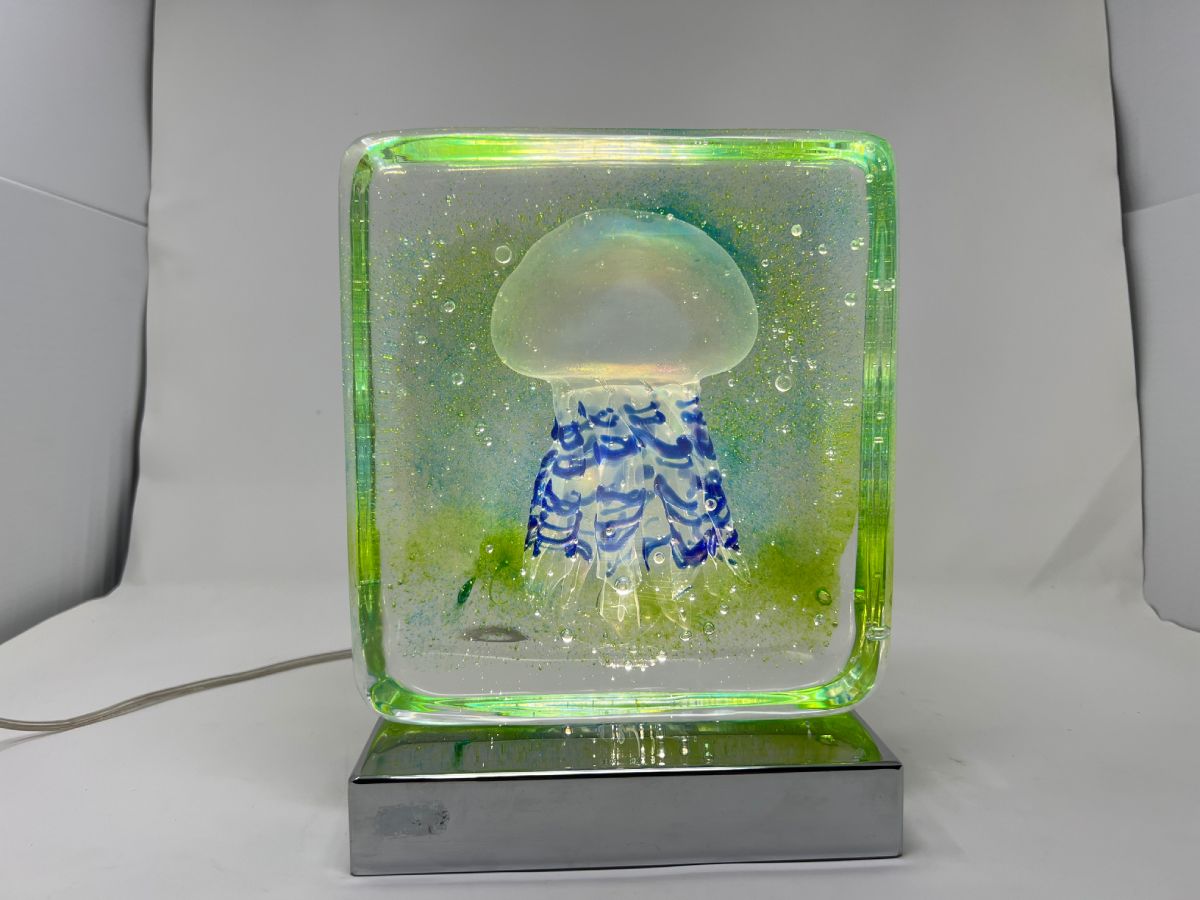
Incalmo
The essence of incalmo lies in combining different glass parts, with various colors and decorations, to create a unique piece. This technique enables the creation of complex and refined objects.
Fenicio
Multicolored glass garlands that wrap objects in an elegant embrace—this is fenicio glass. An ancient technique that reached Murano in the 17th century, it adds a touch of sophistication to any creation.
Scavo
A powder sprinkled on the hot glass surface creates a soft, muted effect—this is scavo glass. This technique was popularized by Alfredo Barbini in the 1950s.
Bulicante
Tiny air bubbles trapped within the glass and arranged in regular patterns—this is "bulicante glass." The effect is achieved using a mold that traps air bubbles during the glassmaking process, another innovation from the 1930s.
From crystal-clear transparency to rustic charm, from trapped bubbles to overlapping colors, Murano glass showcases a myriad of techniques and shades. A kaleidoscope of creativity makes each piece a unique, unrepeatable masterpiece.
Murano glass represents an invaluable heritage that must be cherished and celebrated. Its historical origins, timeless beauty, and masterful craftsmanship make it an Italian excellence recognized worldwide.
Visiting Murano means immersing yourself in a world of charm and creativity. Walking among the glass shops, you can watch the masters at work and discover the secrets of this ancient art—a truly unforgettable experience filled with beauty and emotions.
Contact Murano Online to learn more about glassmaking techniques and color variations!










